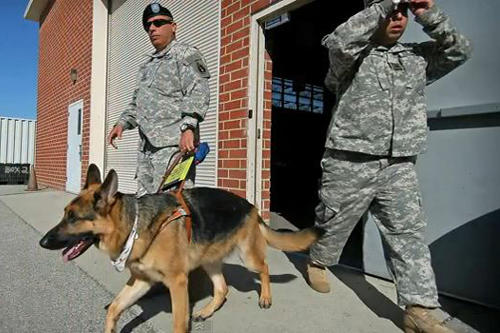The Blind Veterans Association is warning lawmakers against passing legislation – already sidetracked at least twice – to have the Department of Veterans Affairs cover costs of getting guide dogs for blind vets.
BVA officials say that lawmakers have been pressed for three years to provide millions of dollars annually to ensure that blind veterans who want a dog – whose costs have been put at $35,000 – can afford one.
However, the dogs have been paid for by non-profit organization like the The Seeing Eye in New Jersey since the 1960s. BVA officials fear that requiring the VA to pay for a dog will open up the entire system to abuse and fraud.
“For 67 years, BVA has worked with both VA and the original guide dog training programs to ensure that any blinded veteran who wishes to have a guide dog can obtain one for free,” Sam Huhn, national president of the BVA, told a joint meeting of the Senate and House Veterans Affairs committees recently. “For decades, hundreds of blinded veterans have received guide dogs from a handful of well-known programs that never charged a veteran to receive a guide dog.”
Huhn said Congress needs to be wary of funding an unnecessary guide-dog program, “for the protection of disabled veterans, the strong potential risk of fraud, misleading advertising, and VA liability for large future expenditures.”
About three years ago, lawmakers and the VA began hearing horror stories about blind vets not being able to afford guide dogs. News articles began appearing in which families and organizations associated with Afghanistan and Iraq war veterans said they were unable to pay the huge costs for service or therapy dogs, Huhn said.
The veterans and advocates began inquiring about the possibility of the VA providing a dog to any disabled veteran with a physical or mental health condition. Since then Sen. Al Franken, D-Minn., successfully got through a bill to fund a study of service dogs for vets with PTSD and traumatic brain injuries.
As part of the study, the VA would cover the costs of getting a dog for the veterans.
Demands have grown since the Franken legislation for expansion of the benefit for the VA to cover the costs of service dogs, guide dogs, and therapy dogs, according to Huhn. He said training centers around the country are now saying they can provide such dogs at about $35,000 each.
Tom Zampieri, director of government relations for BVA, said he convinced Rep. Mark Amodie, R-Nev., from filing a bill to have the VA pay out millions for the animals.
It was not his first intervention. In 2011, he said, former Sen. John Kerry was going to do the same thing. Kerry had recently met with a blind vet who told the former senator and current Secretary of State how much he needed the dog but was not able to afford it.
Zampieri asked Kerry if the veteran had any other representative with him. Kerry answered that the vet was accompanied by a representative from a dog-training center. “Yeah, of course,” Zampieri said, explaining that the training center stood to get about $35,000 from the VA for each dog it trained if Kerry’s planned bill was passed.
Zampieri said that Congress appears unaware that the private sector has not established the standards, licensure and dog-trainer certification regulations nationwide. Only California has laws governing licensing, he said.
The International Association of Assistance Dog Partners spells out service animal standards, but there are no statutory standards, he said.
In fact, according to Huhn’s testimony before Congress, only nine service dog programs voluntarily follow IAADP standards, while 86 programs do not.
“Some service dogs are being trained in six weeks while the well-established guide dog programs have averaged well over 120 hours of training over a nine-month period,” Huhn testified. “We strongly caution [Congress] to reassess this situation for the protection of disabled veterans, the strong potential risk of fraud, misleading advertising, and VA liability for large future expenditures.
Photo courtesy of The Seeing Eye.





























